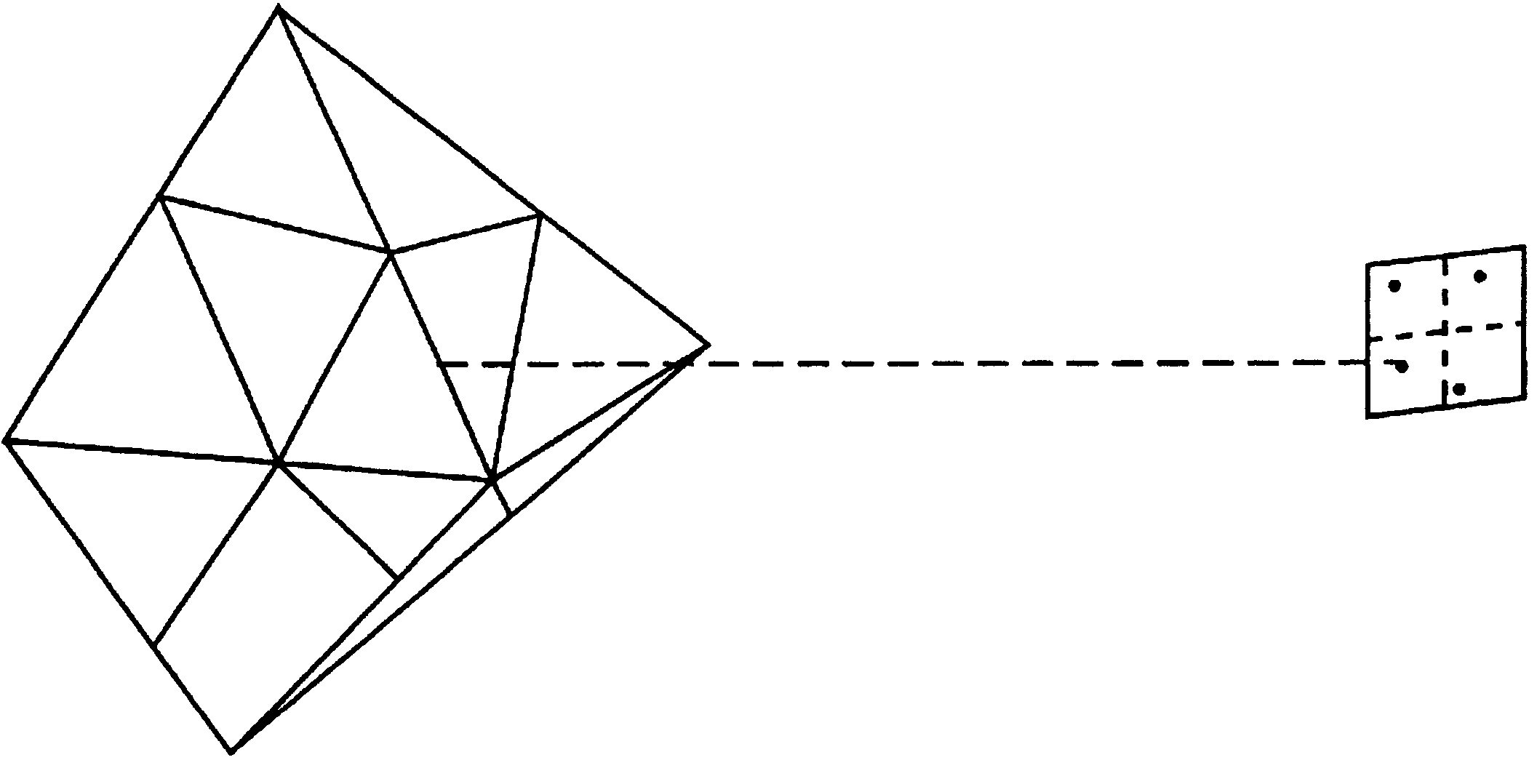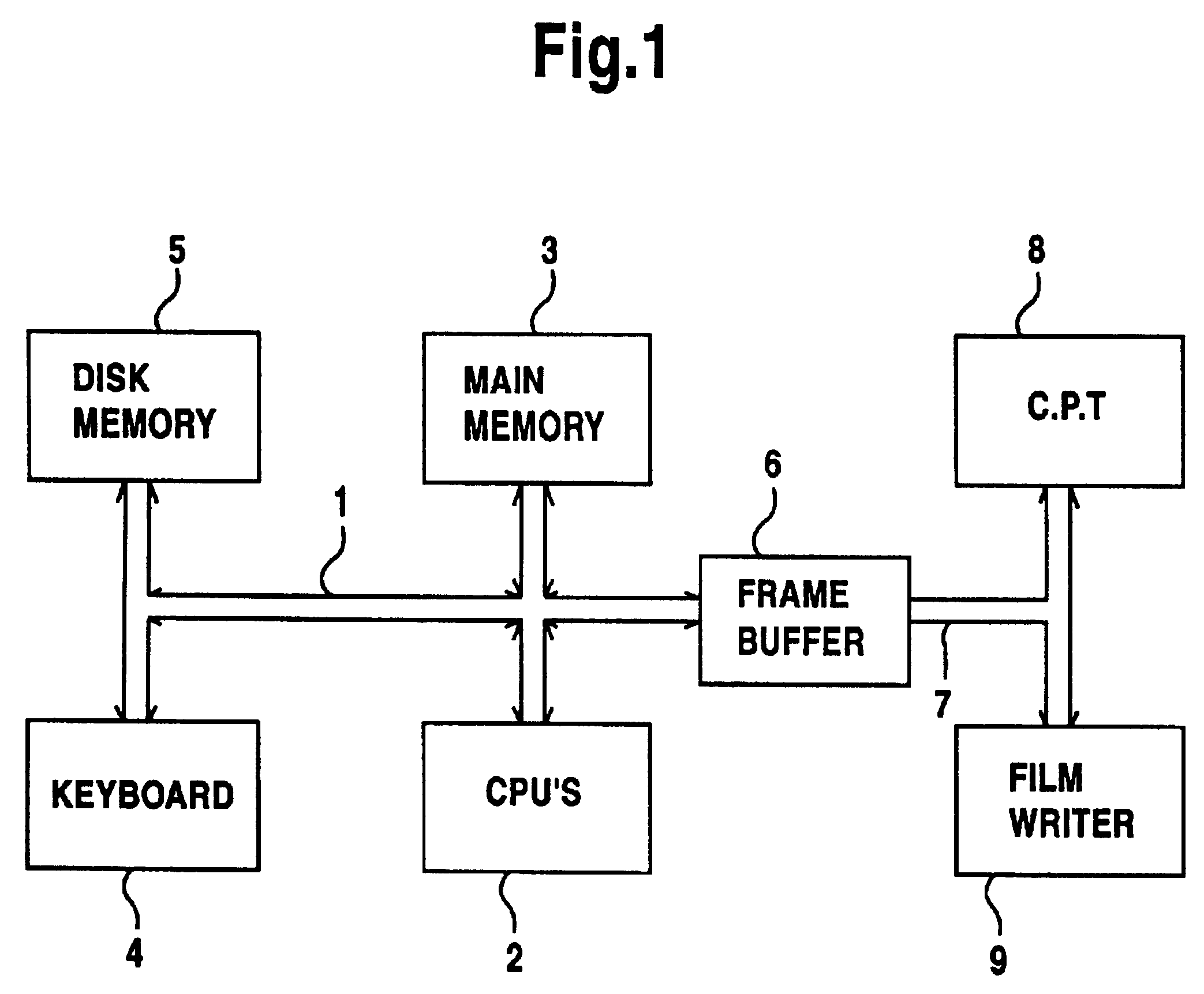Stochastic level of detail in computer animation
a computer animation and detail technology, applied in the field of computer graphics and computer generated animation, can solve the problems of poor image quality, inability to create smooth transitions between representations with arbitrary modeling primitives, and visual artifacts that are unacceptable for high-quality computer animation, and achieve smooth transitions and better images.
- Summary
- Abstract
- Description
- Claims
- Application Information
AI Technical Summary
Benefits of technology
Problems solved by technology
Method used
Image
Examples
Embodiment Construction
[0023]FIG. 1 shows a computer system suitable for carrying out the invention. A main bus 1 is connected to one or more CPUs 2 and a main memory 3. Also connected to the bus is a keyboard 4 and large disk memory 5. The frame buffer 6 receives output information from the main bus and sends it through another bus 7 to either a CRT or another peripheral which writes the image directly onto film.
[0024]FIG. 2 shows a simple object represented as a collection of geometric primitives. In this illustration the primitives are polygons but in practice they could be NURBs, etc. FIG. 3 shows a more detailed representation of the same object using more primitives. To determine the desired level of detail with which to represent an object in a particular scene one needs to determine an image based importance criteria. In one embodiment this is done by defining a bounding box (in practice, an axis-aligned bounding box in the current active coordinate system) for the object by specifying the coordin...
PUM
 Login to View More
Login to View More Abstract
Description
Claims
Application Information
 Login to View More
Login to View More - R&D
- Intellectual Property
- Life Sciences
- Materials
- Tech Scout
- Unparalleled Data Quality
- Higher Quality Content
- 60% Fewer Hallucinations
Browse by: Latest US Patents, China's latest patents, Technical Efficacy Thesaurus, Application Domain, Technology Topic, Popular Technical Reports.
© 2025 PatSnap. All rights reserved.Legal|Privacy policy|Modern Slavery Act Transparency Statement|Sitemap|About US| Contact US: help@patsnap.com



